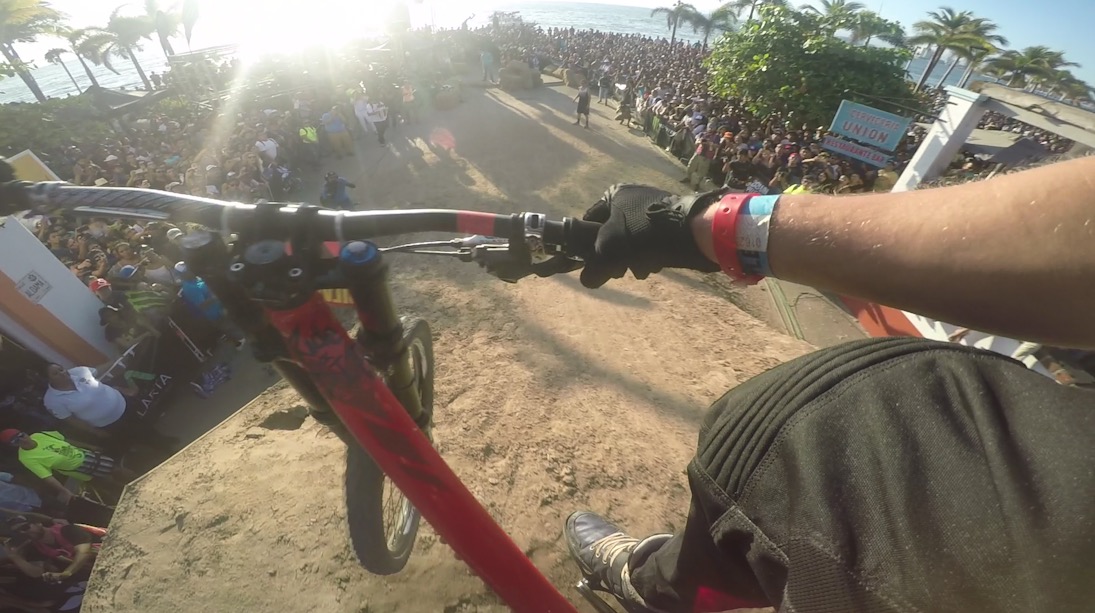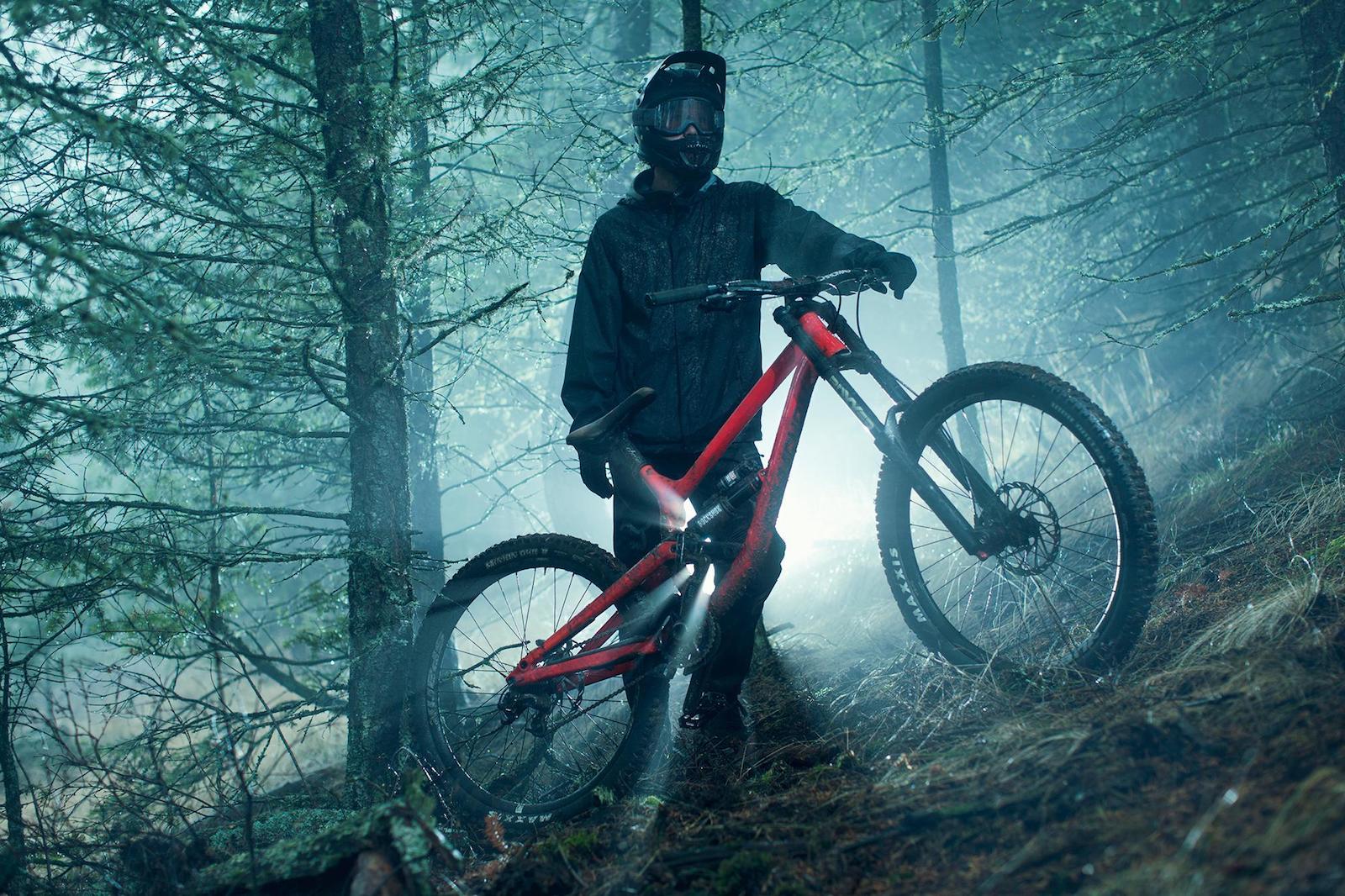[ad3]
During the Bike Festival, we had the new Formula Selva enduro fork, installed on our Specialized Enduro 29 which we use for long term testing. We took the chance to ride it for three days on the Garda trails, with the assistance of official mechanics. Before checking its behavior, let’s have a look at the characteristics of this fork.
Details
For the most part, MTB forks offer air spring curve adjustments and then up to 4 damping adjustments via high and low speed compression and rebound.
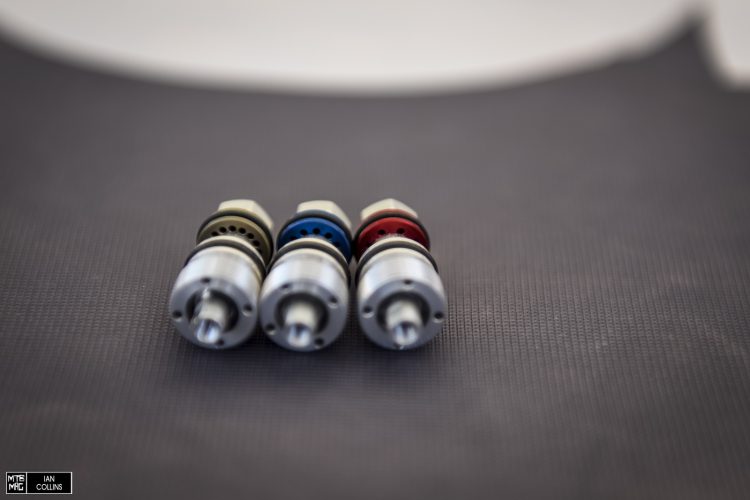
The new CTS (compression tuning system) is, in our words a bit of a plug and play, drop in style tuning system for compression damping on the Selva forks. Basically, with a quick 5 minute swap, an allen key, a box end wrench and Formula’s special pin spanner.
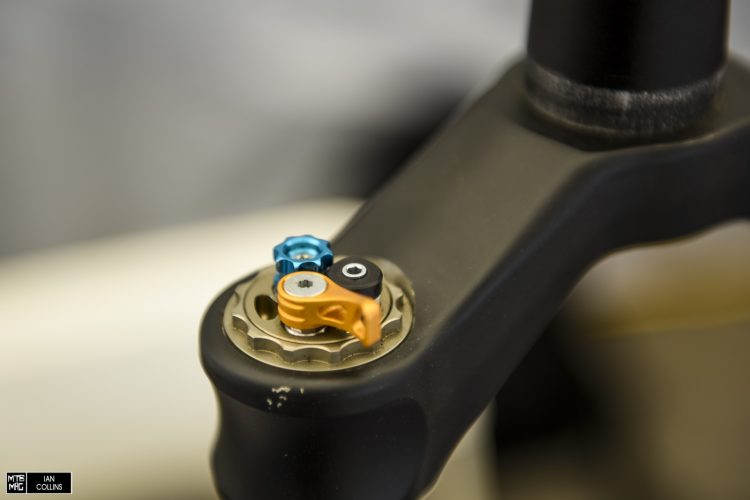
A quick removal of the blue knob above allows access to drop in the CTS valve of your choice.
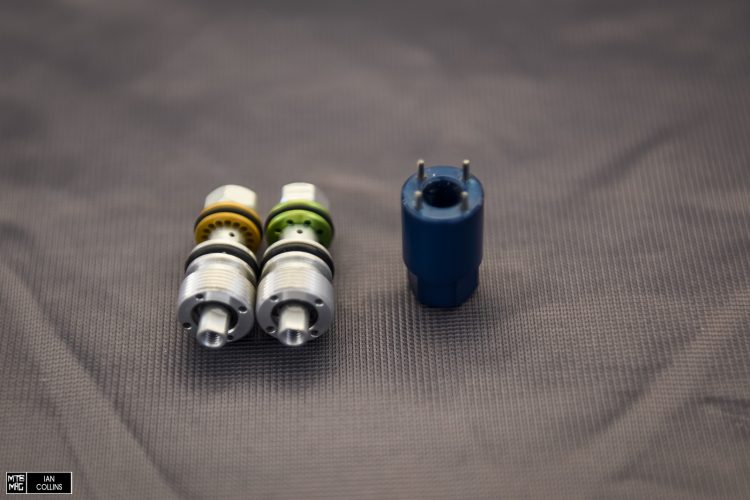
The “special” tunes are race oriented and feature a lot more support in the early to mid travel while not sacrificing any high speed/impact support. Our contact at Formula hinted at the option for custom, individualized tunes based on rider weight, preference, ability, riding style etc….
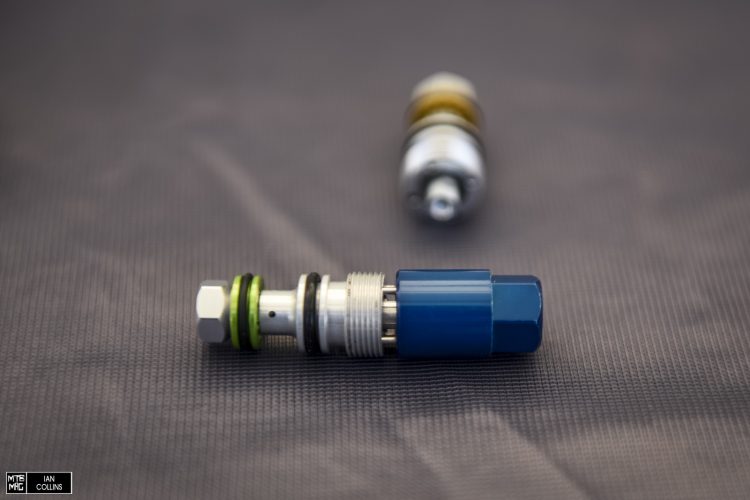
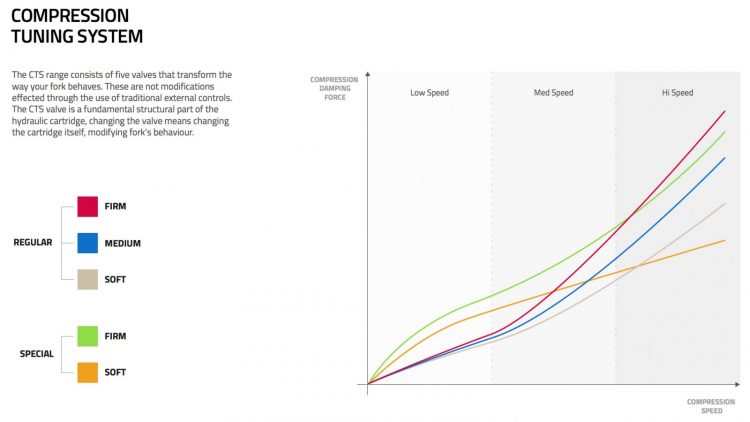
[ad12]
Settings
We tried 2 CTS valves among the 5 available: first of all we tried the blue one, which is the standard installed by the factory. It is important to emphasize that the valves have nothing to do with volume reducers (aka: tokens), which are used to reduce the volume of the positive chamber thus changing the air spring curve. Valves are aimed at adjusting the damping and therefore the overall behavior of the fork through hydraulics as opposed to pneumatics.
With the Selva, you need to change the amount of oil in order to adjust the bottom out resistance. We used the standard amount of 5ml with both valves, so as not to have too many variables during the test.
After the first day, we went back to the Formula stand, where the mechanics politely changed the blue valve with the green one, since we were soaked wet and freezing after a descent in the rain. It took them only 5 minutes to replace the valve, below you can see how it’s done.

On the Trail
As already stated above, the Selva has been installed onto a Specialized Enduro 29 with 160mm of travel, previously equipped with a Ohlins RFX 36.
The first day, with the blue valve, we climbed up to Punta Larici with the intention of reaching the Rocchetta pass. Then the rain made us change our minds, but we still had to cover 900 vertical meters downhill. During the ascent, on asphalt we used the lock out: it is an almost full lock out and the fork doesn’t move even pedaling out of the saddle. It is comfortable on flowing climbs.
The Selva since the beginning of the trail (n° 422 for those who know it) has been sensitive to the small bumps, provided good mid-travel support and late-travel progressivity. It is to be noted that the bottom end of this fork is at 1.8cm from the end of the stanchion, so we thought we were pretty far from bottoming out, but when we came back to the Formula stand, they let us know.
With the blue valve the behavior of the Selva is “classic” and well balanced, it suits that high number of riders who want a safe and comfortable fork. In fact, thanks to its mid-travel support and sensitivity, it allows you to enter a rough section fast and go through it with no pain in the hands and in full control of the bike. The same on steep terrain: the Selva doesn’t when you get over the front on steeper sections, having more margin to face jumps or big hits.
We cleaned the bike to make sure no dirt or mud could enter the fork, then we replaced the blue valve with the green one. We were a bit skeptical because we really liked the blue one and also because of the quote “this is the setting our EWS riders use”. We were afraid to get a fork as hard as nails, but we were wrong.
A shower, dinner and sleep, waiting for the weather to get better, and so it did. We enjoyed Garda at its best during the Tremalzo trail apart from the rather cold temperatures and the breeze from the north.
We’re not going to talk about the 2,100 meters of climbing, but they are among the most spectacular you can ride.
Downhill, we were extremely surprised by the Selva with the green valve: early sensitivity was almost the same, while mid-travel support was slightly increased. In this way the fork uses less travel on average hits, and, most of all, it is very stable while braking and on steep sections. For example we felt really safe on the last part of the Trota trail, that is maybe the steepest section in all of Garda, with a tight corner at the end. The fork feels really “full”, like the one we had during the Ohlins test, but still capable of soaking up efficiently back to back hits, even the big ones.
The weight of the Selva is only 1,950 grams, thanks to the light chassis. This follows the trend of having less feedback from the ground to the rider, not to finish every descent with aching hands (for example, here is the difference between the old and new Fox 36), and also to have more safety on rock gardens or fast rough sections.
Selva rebound makes that typical hiss noise that BOS forks also make. Personally, we didn’t find it annoying. We asked if there is a possible solution and the answer was that it is possible but some parts need to be replaced which are going to alter the fork behavior. Considering the positive feedback so far, Formula has no intention of making any such adjustment.
We can add our positive feedback as well. Yesterday we used the Selva on the Bocca dei Fortini trail: another 1,300 meters of difference of height including descents from Rocchetta Pass, 422 and Trota tracks (this time in dry conditions), again with the green valve. We can say that this enduro fork is definitely at the same level of the other more “big name” competitors, a big plus is the adjustable hydraulics in only 5 minutes.
It’s smooth, it provides support, it has a firm lock out and it is well finished. Since Formula left the fork on our bike for an extensive ride on our home trails, now the Selva has to show its value on a duration test.



